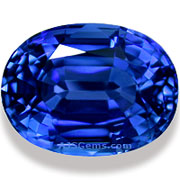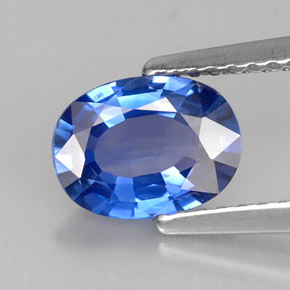 |
 |
| Burma Ruby | Ceylon Sapphire |
Many colored gemstones, especially rubies and sapphires, are rare. In fact they are much rarer than diamond. To add to their rarity, the number of high quality stones extracted from a mine is only a tiny percentage of the total yield. So a top grade ruby or sapphire is indeed an exceptionally rare object.
It is for this reason that gem cutters try at all costs to preserve as much of the rough material when they cut valuable gems. The per carat price of these gems is so high that preserving an extra half carat (100 milligrams) of weight can make a significant difference in the economics of the business.
However, there are some tradeoffs in trying to maximize the yield from the rough stone. For one thing, it means that the shape of the finished stone will usually be based on the shape of the rough material. That's the reason you won't find many round rubies or sapphires, especially in larger sizes. The rough stone tends to yield mainly ovals, with some cushions and pear shapes. A more serious tradeoff is occasional bad cutting which can affect the beauty of the gem.
 |
| Windowed Blue Sapphire |
The term native cut is often used to refer to a range of cutting ills that sometimes result from an overzealous attempt to maximize carat weight. The most common error is cutting a gem with a large face and a shallow pavilion, resulting in a phenomenon known as windowing. This has the unfortunate effect of leaving an area of diminished color in the center of the gem, where some light rays pass through the stone instead of being reflected back to the eye as brilliance.
In colored gems, cut is not nearly as critical as it is in the diamond world. The most important thing in colored stones is color and clarity, and the cut should enhance and not detract from these key qualities. In short, we can say that the cut of a colored gem must be at least adequate, meaning that that the gem should be cut with proper proportions, the culet should be centered, and the gem should not exhibit windowing or extinction (dark areas where light is not reflected).
Some colored stones are now cut on advanced faceting machines that allow precise control over facet angles. These machines can yield very good results, and require less skill on the part of the cutter than more traditional cutting methods. But precision cutting cannot compensate for inferior material. Fine gem material with an adequate cut will always yield better results than precision cutting of mediocre material.
From time to time we purchase gems that are very fine material but poorly cut. We will only purchase such gems if we think they can be recut successfully to eliminate windowing and improve the brilliance and fire of the stone. The end result is usually excellent, but recutting a stone in this way always involves some loss of weight, since the gem must be completely refaceted. The price per carat of a recut stone will naturally be higher, but it is money well spent. Buying a poorly cut stone almost always leads to disappointment later.